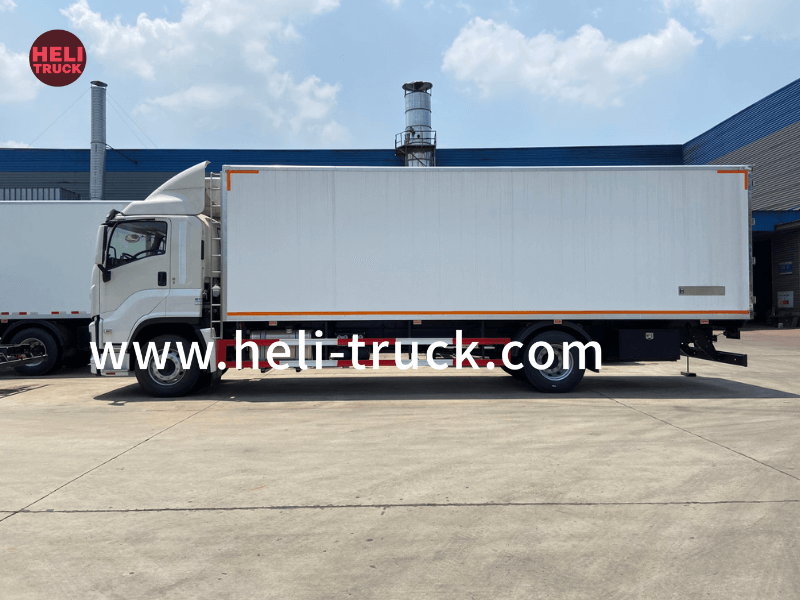Introduction
Garbage compactor trucks play a crucial role in waste management systems, ensuring the efficient collection and disposal of trash from residential and commercial areas. Over the years, advancements in technology have led to the development of garbage compactor trucks with automated features that enhance their functionality and effectiveness. In this article, we will explore the evolution of garbage compactor trucks, the benefits of automated features, and the future of waste management with these innovative vehicles.
The Evolution of Garbage Compactor Trucks
Garbage compactor trucks, also known as refuse collection vehicles (RCVs) or garbage trucks, have been around for decades, providing an essential service in keeping cities clean and hygienic. The earliest versions of garbage trucks were simple in design, consisting of a collection bin mounted on a chassis with a manual loading system. Waste collectors would manually lift and dump trash into the bin before compacting it using a hydraulic press.
As urban populations grew and waste volumes increased, there was a demand for more efficient and productive waste collection methods. This led to the development of garbage compactor trucks with automated features that could streamline the collection process and improve overall efficiency. Automated garbage trucks revolutionized the waste management industry by reducing labor costs, increasing collection speeds, and improving safety for workers.
One of the key innovations in garbage compactor trucks was the introduction of hydraulic compaction systems. These systems allowed waste collectors to compact trash more efficiently, maximizing the truck's carrying capacity and reducing the number of trips required to empty the bin. Hydraulic compaction systems also helped to reduce the volume of waste, making it easier to transport and dispose of at landfill sites.
Another significant advancement in garbage compactor trucks was the integration of automated lifting mechanisms. Automated side loaders and rear loaders were introduced to eliminate the need for manual lifting and reduce the risk of injuries for waste collectors. These lifting mechanisms could pick up and empty bins into the compactor with minimal human intervention, making the collection process faster and safer.
Benefits of Automated Features in Garbage Compactor Trucks
The incorporation of automated features in garbage compactor trucks has brought about numerous benefits for waste management systems and the environment. Some of the key advantages include:
1. Increased Efficiency: Automated garbage trucks can collect and compact waste at a much faster rate than traditional manual methods. This increased efficiency allows municipalities to cover larger areas in less time, leading to more frequent collections and cleaner streets.
2. Improved Safety: Automated features such as lifting mechanisms and compaction systems help to reduce the physical strain on waste collectors and minimize the risk of injuries. By eliminating the need for manual lifting and handling of heavy bins, automated garbage trucks create a safer working environment for waste management personnel.
3. Reduced Labor Costs: Automating the waste collection process can lead to significant cost savings for municipalities and waste management companies. By reducing the manpower required for garbage collection and disposal, automated garbage trucks help to lower labor costs and improve operational efficiency.
4. Environmental Benefits: Garbage compactor trucks with automated features are more environmentally friendly than traditional waste collection methods. The use of hydraulic compaction systems reduces the volume of waste, allowing for more efficient transportation and disposal. Additionally, automated garbage trucks can be equipped with sensors and monitoring systems to optimize route planning and reduce fuel consumption.
5. Enhanced Service Quality: Automated garbage trucks enable waste collectors to provide a more consistent and reliable service to residents and businesses. By ensuring timely and efficient waste collection, municipalities can improve overall cleanliness and hygiene standards in their communities.
garbage truck manufacturers in Automated Garbage Compactor Trucks
As technology continues to advance, the future of garbage compactor trucks looks promising with the integration of more sophisticated automated features. Some of the key trends that are expected to shape the evolution of automated garbage trucks include:
1. IoT Connectivity: The Internet of Things (IoT) is set to revolutionize waste management systems by enabling real-time monitoring and data collection on garbage compactor trucks. IoT sensors can track fill levels, monitor equipment performance, and optimize route planning to maximize efficiency and reduce operational costs.
2. Autonomous Operation: The development of autonomous garbage trucks is on the horizon, with companies exploring the use of artificial intelligence and machine learning to enable self-driving capabilities. Autonomous garbage trucks have the potential to further enhance efficiency, safety, and environmental sustainability in waste management operations.

3. Waste Sorting Technologies: Garbage compactor trucks of the future may be equipped with advanced waste sorting technologies that can segregate recyclable materials from general waste during the collection process. This innovation could help to improve recycling rates and reduce the amount of waste sent to landfills.
4. Energy Efficiency: Future garbage compactor trucks are likely to be designed with a focus on energy efficiency and sustainability. Electric-powered garbage trucks and hybrid models are already being developed to reduce greenhouse gas emissions and minimize the environmental impact of waste collection operations.
5. Enhanced User Experience: Automated garbage trucks of the future may offer enhanced user experience features for residents and waste management personnel. Mobile apps, digital platforms, and interactive interfaces could be implemented to facilitate communication, scheduling, and feedback on waste collection services.
Conclusion
Automated garbage compactor trucks have come a long way since their inception, with advancements in technology transforming the waste management industry. The integration of automated features such as hydraulic compaction systems, lifting mechanisms, and IoT connectivity has revolutionized the efficiency, safety, and sustainability of waste collection operations. Looking ahead, the future of garbage compactor trucks is bright, with exciting developments on the horizon that promise to further enhance the functionality and effectiveness of these essential vehicles in managing our waste streams. As cities continue to grow and urbanization accelerates, the role of automated garbage trucks will become increasingly critical in maintaining clean, healthy, and sustainable communities.
